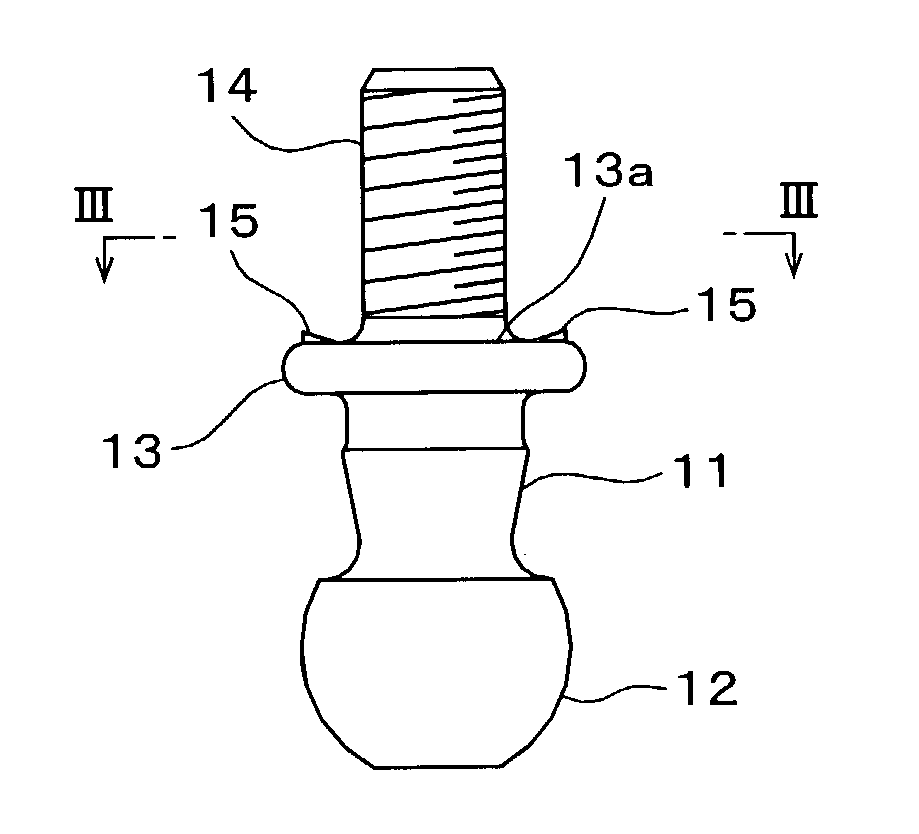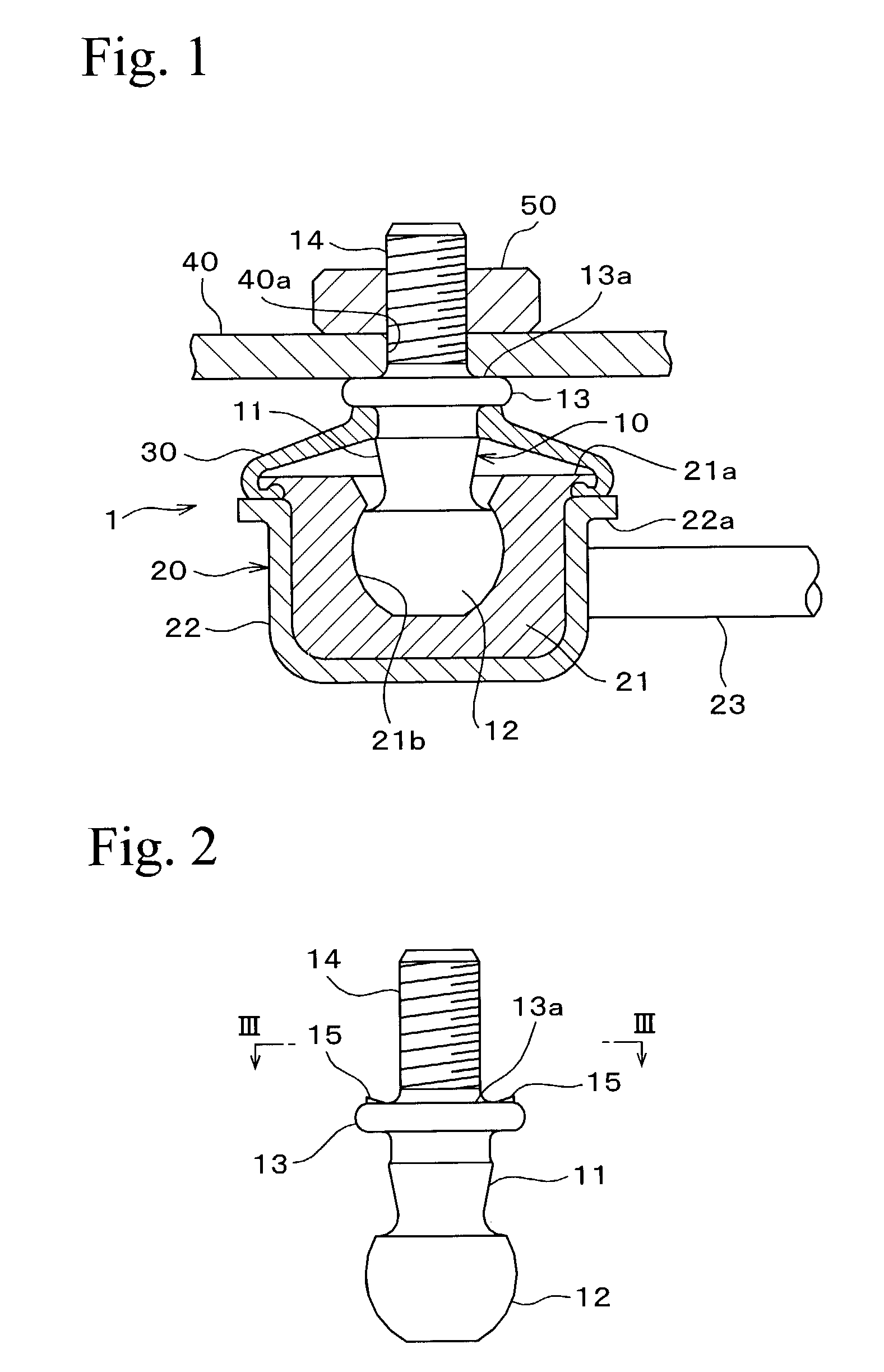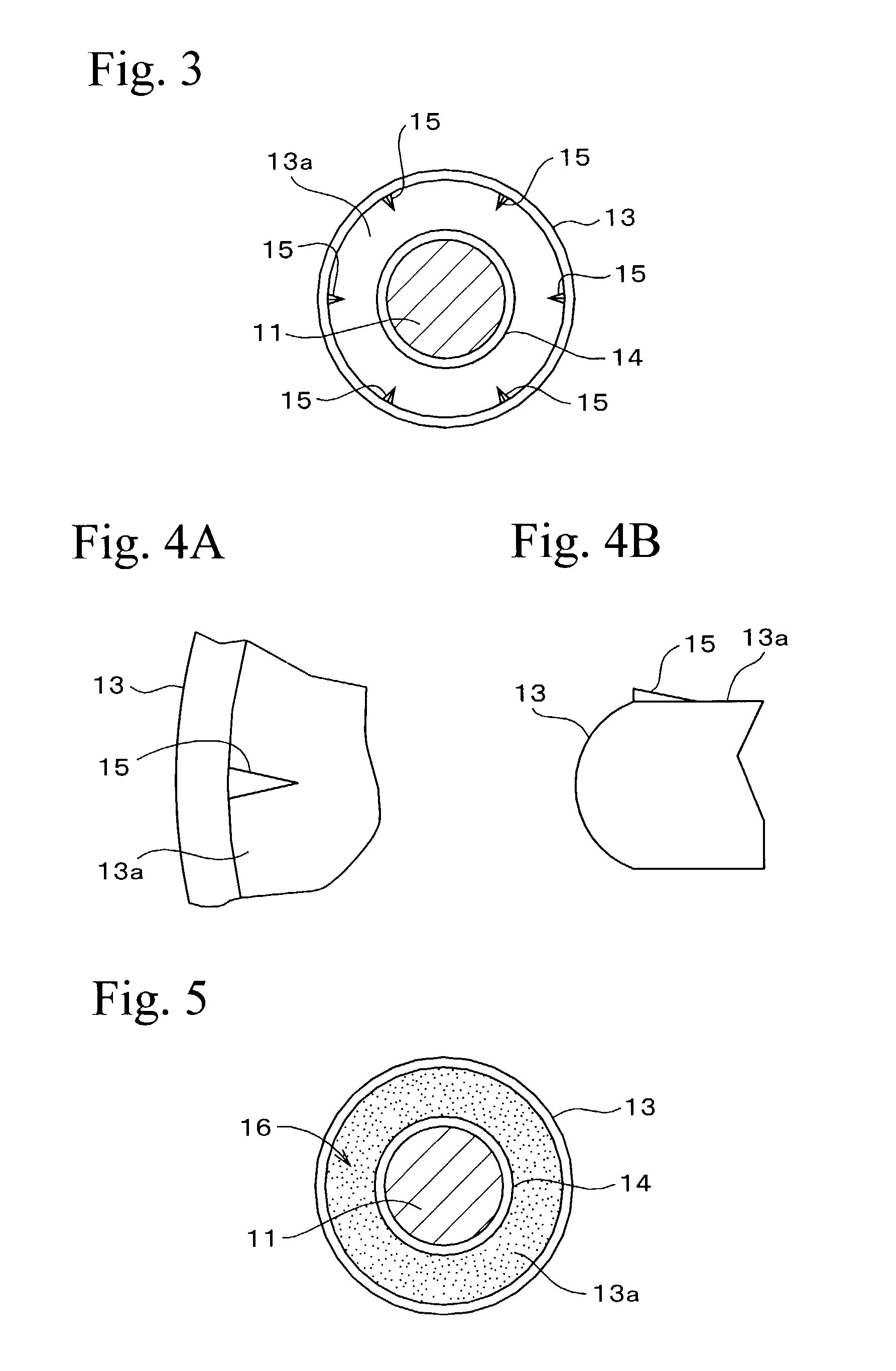Ball joint
a ball joint and ball stud technology, applied in the field of ball joints, can solve problems such as looseness, and achieve the effects of preventing and preventing the possibility of co-rotation of the ball stud
- Summary
- Abstract
- Description
- Claims
- Application Information
AI Technical Summary
Benefits of technology
Problems solved by technology
Method used
Image
Examples
examples
[0028]Next, examples of the present invention will be described.
[1] Forming of projections
[0029]The projections of the shape and the arrangement shown in FIG. 3 and FIGS. 4A and 4B were formed, while changing the height in a range of 0.01 to 0.16 mm, at a seat surface portion of a collar portion of a ball stud which is the same as the ball stud 10 shown in FIG. 2 and whose material was steel equivalent to S30C to S45C. The projections were formed by forging at the same time as the molding of the ball stud. As shown in FIG. 1, these ball studs were fastened to a mounting member by nuts, and the screw torque when co-rotation arose at the ball stud was investigated. It should be noted that the screw portion with which the nut was screwed was M10, and an electrophoretic coating of a cationic resin was applied at a thickness of 20±10 μm to the surface of the mounting member into which the projections bit.
[0030]FIG. 6 shows the relationship between the height of the projection and co-rota...
PUM
 Login to View More
Login to View More Abstract
Description
Claims
Application Information
 Login to View More
Login to View More - R&D
- Intellectual Property
- Life Sciences
- Materials
- Tech Scout
- Unparalleled Data Quality
- Higher Quality Content
- 60% Fewer Hallucinations
Browse by: Latest US Patents, China's latest patents, Technical Efficacy Thesaurus, Application Domain, Technology Topic, Popular Technical Reports.
© 2025 PatSnap. All rights reserved.Legal|Privacy policy|Modern Slavery Act Transparency Statement|Sitemap|About US| Contact US: help@patsnap.com



